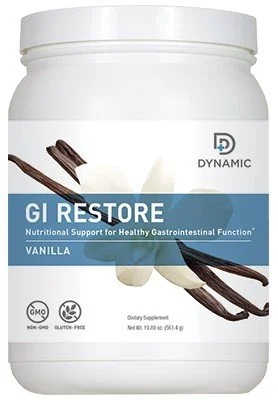What Your Stool is Telling You
As children, we were often advised to keep quiet about bathroom matters. However, it’s high time we let go of such inhibitions and seriously discuss bowel movements.
I understand it may be uncomfortable to talk about, yet your bowel movements can reveal valuable insights about your health. The texture, shape, size, color, odor, and frequency of your visits to the bathroom all serve as vital indicators of your diet, hydration, nutrient absorption, and potential medical conditions.
What does a healthy stool look like? When should you be concerned about irregular or discolored bowel movements? And most importantly, how can you support your Digestive System to eliminate waste effortlessly?
Rest assured; I will cover all these questions and more to ensure that your time in the bathroom is as pleasant as possible. Here’s everything you need to know to maintain smooth and regular elimination.
Your bowel movements can inform you about your fiber intake and hydration levels. They can also tell you if your Digestive System is functioning optimally. Now, let’s delve into the details.
Discovering why it’s beneficial to talk about your stools and interpreting their color, odor, and patterns are all vital aspects we will explore. To aid your understanding, we will also explore the renowned Bristol Stool Chart. But first, let’s focus on what constitutes a regular bowel movement.
What is a Normal Bowel Movement?
There is remarkable diversity in what can be considered normal. Each person’s feces are unique and may vary from day to day. However, certain factors determine whether your stool falls within the range of normalcy. The size, shape, firmness, color, timing, and smell all provide insights into your elimination.
Morning is the most common time for a bowel movement. During sleep, your body diligently works to digest and process food. However, the process slows since you do not consume food or liquids while asleep. This rest time allows your Digestive System to grow, repair, and rebuild tissue, utilizing stored glucose instead of calories as fuel. Consuming a large meal before bedtime places additional stress on your Digestive System and can interfere with sleep.
The time it takes for a bowel movement and its regularity are also reliable indicators of the normalcy of your stool. Elimination should typically take only a couple of minutes and happen daily. If it talks longer to poop than to pee, you may have a problem.
Consistency
Dr. Heaton created the Bristol Stool Chart, also known as the Bristol Stool Form Scale (BSFS), a simple method to classify stools visually without requiring patients to bring test samples into a lab. It is used worldwide to assess bowel health. For example, the Bristol Stool Chart can help diagnose irritable bowel syndrome.
The Bristol Stool Form Scale (BSFS) categorizes stools into seven types based on appearance and consistency. Let’s explore each type:
Type 1: Separate hard lumps – This type is darker in color and indicates severe constipation. The stool is hard and lumpy, resembling small nuts. It is challenging to pass and often associated with straining.
Type 2: Lumpy and sausage-like – This type is also dark in color and indicates constipation. The stool is visibly lumpy but has a more cohesive appearance, resembling sausages. It may still be difficult to pass.
Constipation happens because food passes too slowly through the digestive tract, and your large intestine absorbs too much water.
Add Dynamic Fiber or more fiber to your diet to promote healthy bowel movements. Dynamic Fiber is a physician-formulated fiber blend to give the good bacteria in your gut the strength it needs to fight off the overgrowth of harmful bacteria and support healthy bowel patterns.
Type 3: Sausage-shaped with cracks – This type is considered healthy. The stool is smooth and soft, without lumps, resembling a sausage with surface cracks. It’s easy to pass and indicates a healthy bowel movement.
Type 4: Smooth and soft – This type is considered optimal. The stool is smooth, soft, and well-formed, similar to a snake. It is easy to pass and signifies good digestive health.
Type 5: Soft blobs with clear-cut edges – The stool consists of soft lumps with defined boundaries and is considered normal and healthy. It has a smoother texture, passing quickly through the large intestine.
To maintain healthy bowel function, I recommend that virtually everyone take a probiotic for daily maintenance. Probiotics support healthy bowel function and impact how long waste remains in the body. UltraBiotic Daily Multi-Strain is formulated to care for your digestive health.
Type 6: Mushy consistency – This type suggests mild diarrhea. It may be lighter in color. The stool is mushy, with fluffy pieces and ragged edges. The material has moved too quickly through the large intestine, so the colon has not had time to absorb the water. It can be challenging to control.
Type 7: Watery and entirely liquid – This type indicates severe diarrhea. It may also be lighter in color. The stool is runny and has no solid pieces because it has moved too quickly through the large intestine. It is urgent and difficult to control.
The most common causes of acute diarrhea are dehydration or food sensitivities. If you have persistent diarrhea, that could mean a gut infection such as leaky gut, small intestine bacterial overgrowth (SIBO), Celiac disease, or Candida overgrowth.
Providing your gut with essential nutrients is crucial in supporting healthy bowel patterns. My most comprehensive tool for this is Dynamic GI Restore, which contains powerful, gut-repairing ingredients. These ingredients nourish and soothe your gut lining’s cells while restoring its natural mucosal lining.
Drink plenty of water and electrolytes if you have diarrhea to maintain healthy hydration levels. Aim to drink half your body weight in ounces daily. For example, if you weigh 150 pounds, drink at least 75 ounces of water. Other fluids may not count as part of water intake since they have the opposite effect and can promote dehydration.
The structure and color of your stool tell you about the food, beverages, and medications you are consuming.
Color
Color varies based on several factors, including diet, medications, and underlying health conditions. Here are some common stool colors and what they might indicate:
Brown: This is the most common and normal color for stool. It signifies a healthy Digestive System and proper breakdown of food.
Green: A green stool can occur due to consuming green-colored foods, such as leafy vegetables or food dyes. It can also indicate a faster transit time through the intestines or the presence of bile in the stool.
Yellow: If your stool is yellow and accompanied by a strong smell, it likely indicates you are getting too much fat in your diet. It can also mean your gut is not absorbing nutrients from your food. Malabsorption may be due to a leaky gut, SIBO, food sensitivities, or chronic illness.
To promote optimal absorption, I recommend taking Digestive Complete with every meal. Digestive Complete is an excellent supplement for nutrient absorption using a broad spectrum of digestive enzymes. When taken with a meal, this physician-formulated supplement breaks down peptides, proteins, carbohydrates, disaccharides, sugars, and fats.
Black: One of the most common causes of a black stool is too much iron. If you have anemia and are taking iron supplements or over-the-counter medications for diarrhea, your stool might be very dark. However, black stool can also indicate the presence of digested blood, which could be a sign of gastrointestinal bleeding. Consult with your functional medicine physician to rule out bleeding.
Red: Eating red foods such as beets, cranberries, tomato juice, or red gelatin (containing food dyes) can cause your stool to turn red. However, it could be due to a sign of bleeding, a gut infection, or colon cancer. If you cannot explain a red stool because of your diet, you should make an appointment with your functional medicine doctor.
White or pale-colored: A pale or white-colored stool likely indicates your body is not producing bile or your gallbladder is malfunctioning. It could also indicate a gut infection, such as Candida overgrowth or SIBO, and your bile duct is blocked. Pale stools could also be a side effect of over-the-counter medications used for diarrhea.
Healing
Having healthy bowel patterns starts with repairing your gut. In functional medicine, we use a simple method we call the 5R program. I have successfully used the 5R approach with countless patients to heal their gut and reverse their symptoms. Stay tuned for a complete discussion of this in the coming weeks.
In addition to understanding the appearance of your stool, it’s essential to support your Digestive System for optimal bowel health. Here are some tips:
Follow the 7-Systems Plan: Include fiber-rich foods like fruits, vegetables, whole grains, and legumes to promote regular bowel movements. Stay hydrated to soften the stool and ease its passage.
Exercise regularly: Physical activity helps stimulate the muscles in your intestines, promoting healthy digestion and elimination.
Manage stress: Chronic stress can affect digestion. Find stress-reducing techniques such as exercise, meditation, hobbies, therapy, or coaching to support your well-being.
Avoid excessive laxative use: Over-reliance on them can disrupt your natural bowel function. Use them sparingly and under the guidance of a healthcare professional. We will have more tips on this in our following newsletter.
Remember that you can expect individual variations in your stool. However, consult a healthcare professional for further evaluation if you notice significant and persistent changes in the color or consistency or experience other symptoms like abdominal pain, weight loss, or bleeding.
For your health,
Dr. Pat
Video of the Week








